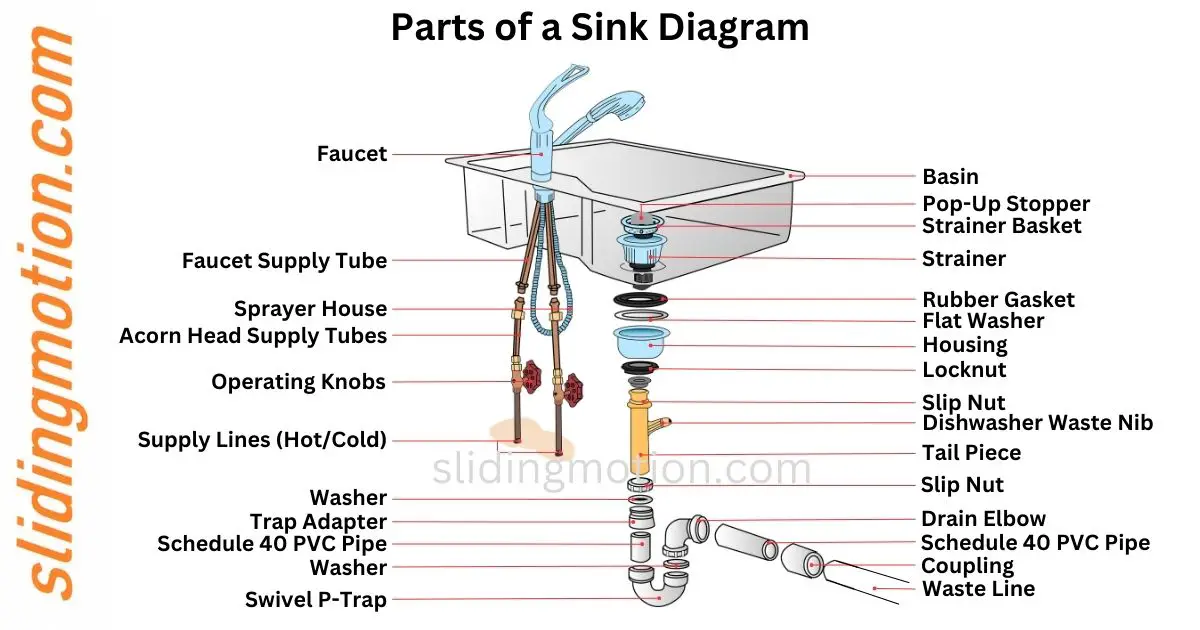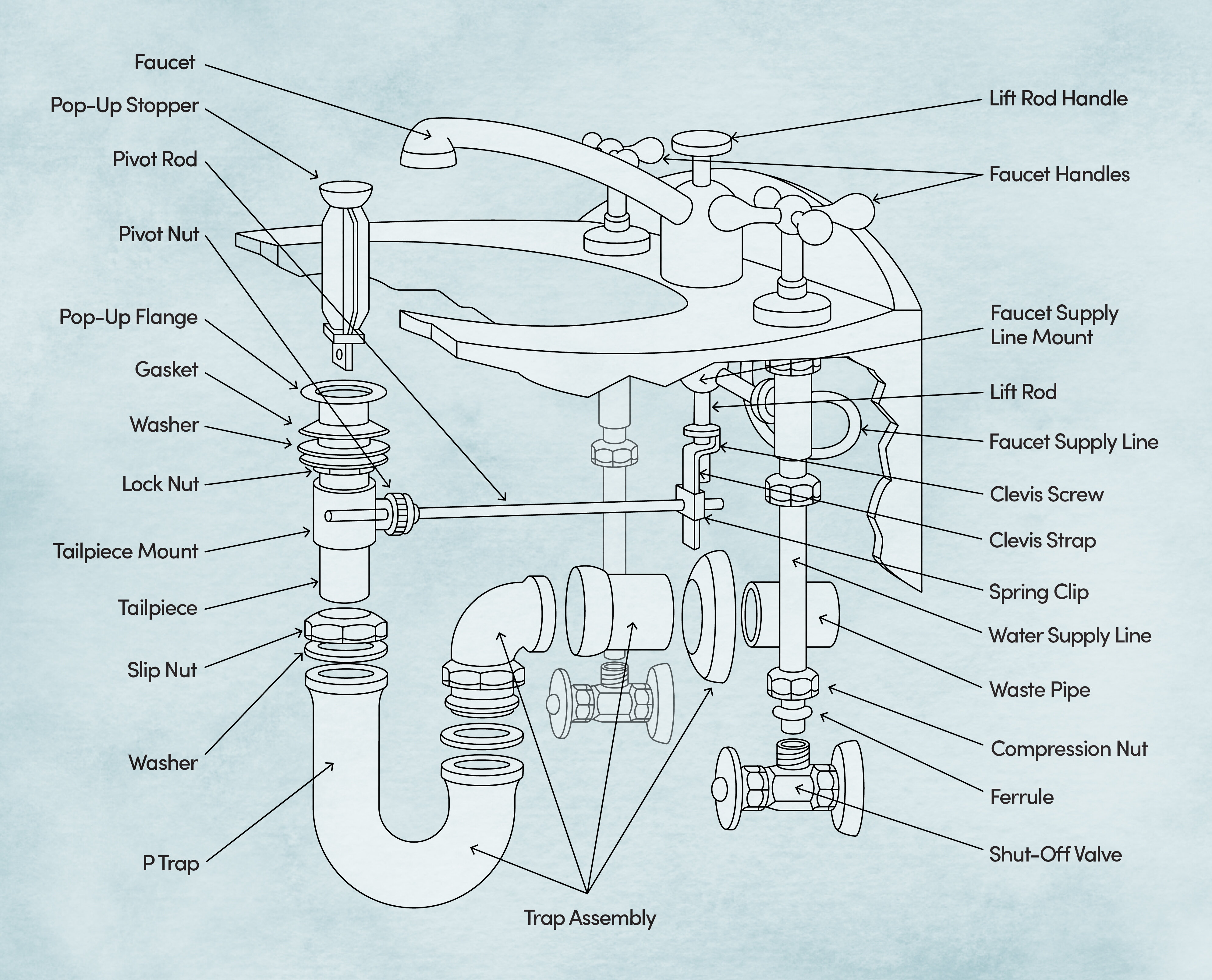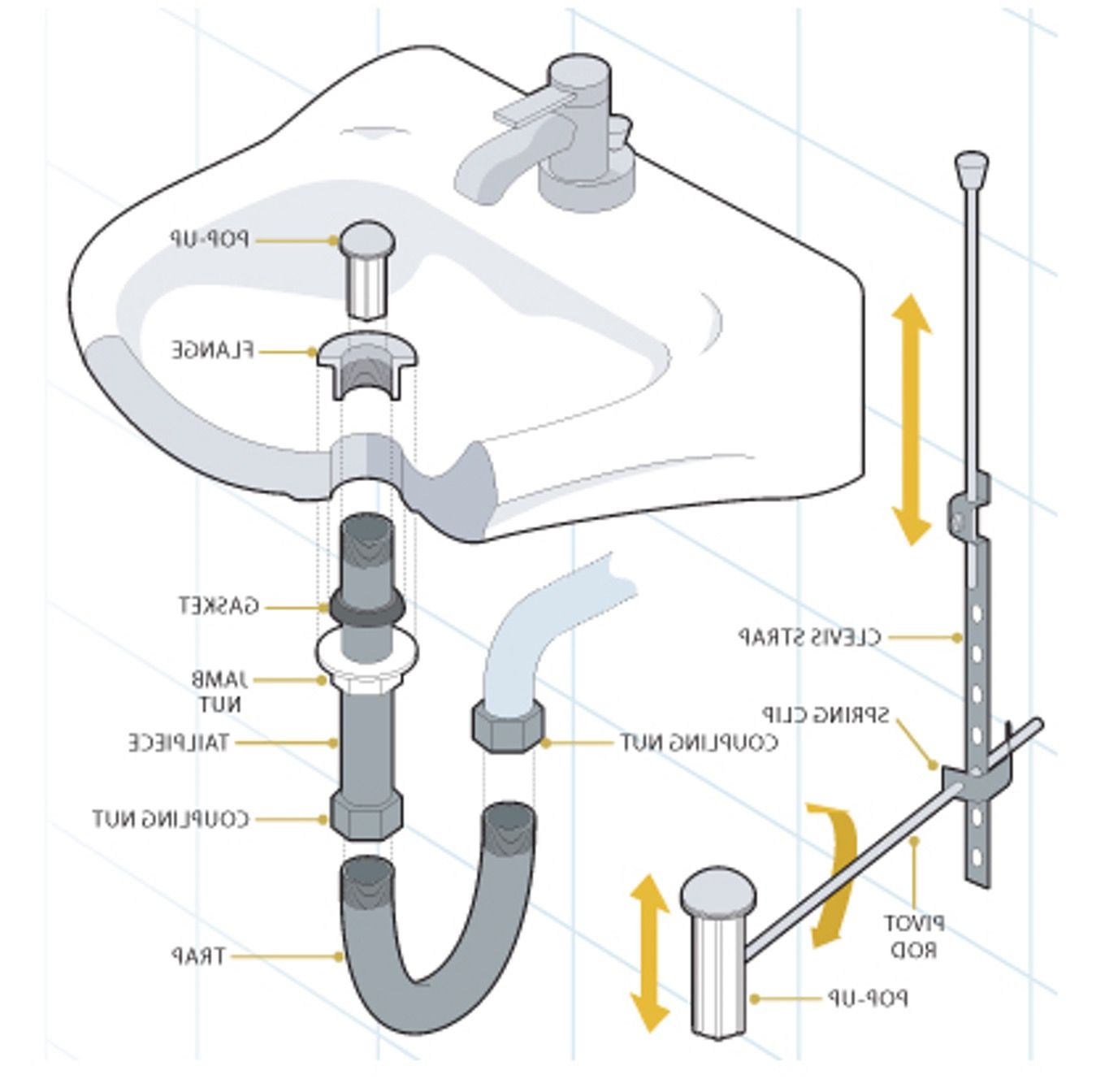Bathroom Sink Faucet Components: Bathroom Sink Parts Names

Bathroom sink parts names – The bathroom sink faucet is a crucial component that provides a controlled flow of water for various tasks. It consists of several essential parts that work together to deliver water efficiently and effectively.
Faucet Handle
The faucet handle is the primary control for turning on and off the water flow. It can be a single handle that controls both hot and cold water or separate handles for each. Handles come in various designs and materials, such as lever, knob, or cross handles, and can be made of metal, plastic, or ceramic.
Faucet Spout
The faucet spout is the part that dispenses water from the faucet. It can be fixed or swiveling, allowing for greater flexibility in directing the water flow. Spouts come in different shapes and lengths, such as curved, straight, or waterfall spouts, and can be made of materials like chrome, stainless steel, or brass.
Faucet Aerator
The faucet aerator is a small device attached to the end of the spout that mixes air with the water flow. This creates a more aerated stream, reducing splashing and increasing water efficiency. Aerators can be easily removed for cleaning or replacement.
Familiarizing yourself with the various bathroom sink parts names, such as the drain stopper, aerator, and handles, is essential. When it comes to installing a bathroom sink drain, it’s important to understand the specific components involved in the process. Our comprehensive guide on installing bathroom sink drain provides detailed instructions and insights into the parts and steps involved.
By knowing the names and functions of these parts, you can ensure a successful installation and maintain a well-functioning bathroom sink.
Faucet Base Plate, Bathroom sink parts names
The faucet base plate is the mounting surface that connects the faucet to the sink. It provides stability and support for the faucet and can be made of materials like metal or plastic. Some base plates include additional features like a soap dish or a deck plate to cover unused faucet holes.
The bathroom sink, an indispensable fixture in our daily lives, comprises a myriad of parts, each serving a specific purpose. Among the most common types of sinks are self rimming bathroom sinks , which offer a sleek and seamless installation by resting directly on the countertop, eliminating the need for a separate mounting frame.
Understanding the names of these parts, such as the basin, faucet, drain, and overflow, empowers us to make informed decisions when it comes to maintenance and upgrades, ensuring the longevity and functionality of our bathroom sinks.
Faucet Materials
Bathroom sink faucets are made from various materials, each with its unique advantages and drawbacks:
- Chrome: A popular choice due to its durability, corrosion resistance, and shiny finish.
- Stainless Steel: Known for its strength, durability, and resistance to rust and stains.
- Brass: A traditional material that offers durability, a warm metallic finish, and is easy to repair.
- Plastic: A budget-friendly option that is lightweight, easy to install, but may not be as durable as other materials.
Bathroom Sink Drain Assembly

The bathroom sink drain assembly is a crucial component responsible for ensuring proper drainage and preventing leaks. It consists of several key parts that work together to achieve these functions.
Drain Stopper
The drain stopper is a small, usually rubber or plastic device that fits into the drain hole. It prevents water from draining out of the sink when it is closed. Drain stoppers can be lifted or pushed to open and close the drain.
Tailpiece
The tailpiece is a curved pipe that connects the drain stopper to the P-trap. It directs water from the drain stopper into the P-trap.
P-trap
The P-trap is a U-shaped pipe that traps water to create a seal. This seal prevents sewer gases from escaping into the bathroom and also prevents the drain from clogging.
Bathroom Sink Vanity Cabinetry

Bathroom sink vanity cabinets provide storage and style to the bathroom. They come in a variety of types, materials, and designs to suit different needs and preferences.
Types of Vanity Cabinets
- Wall-mounted vanities are suspended from the wall, creating a sleek and modern look. They offer space-saving benefits, making them ideal for small bathrooms.
- Floor-mounted vanities rest on the floor, providing more stability and storage capacity. They are available in various styles, from traditional to contemporary.
- Floating vanities combine the best of both worlds, appearing to float above the floor while still offering storage space. They provide a unique and stylish look.
Materials Used in Vanity Construction
- Wood is a classic choice for vanity construction, offering durability and a timeless aesthetic. Solid wood is the most durable option, while engineered wood is more affordable.
- Laminate is a budget-friendly material that mimics the look of wood or stone. It is water-resistant and easy to clean.
- Thermofoil is a vinyl-like material that is heat-fused to a substrate. It is durable, water-resistant, and available in a wide range of colors and patterns.
Choosing the Right Vanity
When choosing a vanity, consider the following factors:
- Bathroom size: Choose a vanity that fits the available space without overcrowding the bathroom.
- Storage needs: Determine the amount of storage space required for bathroom essentials.
- Style: Select a vanity that complements the overall bathroom design, whether traditional, modern, or transitional.